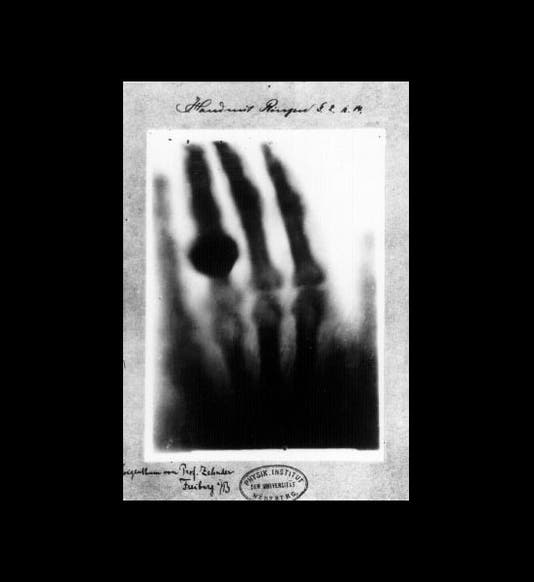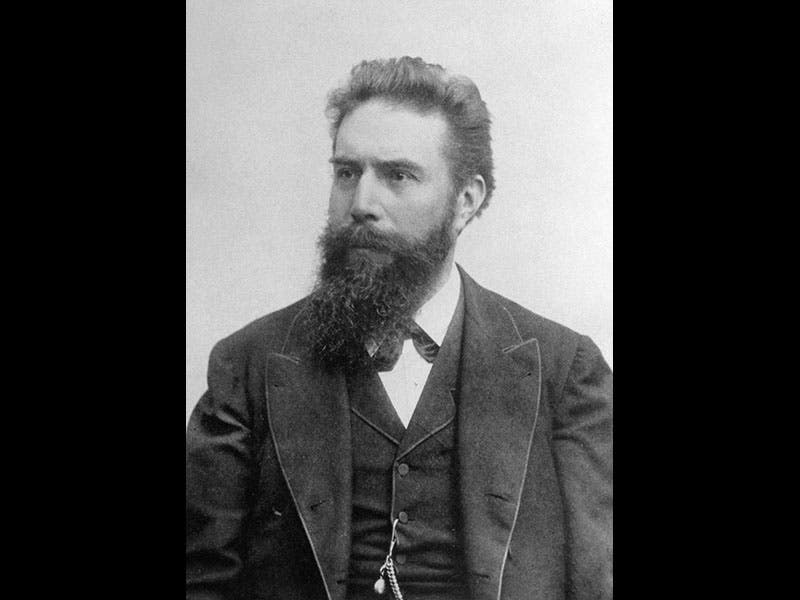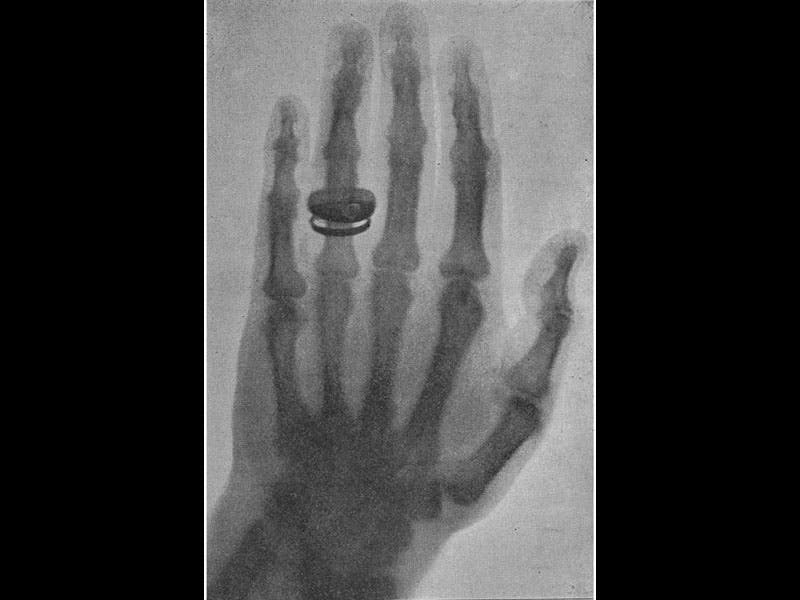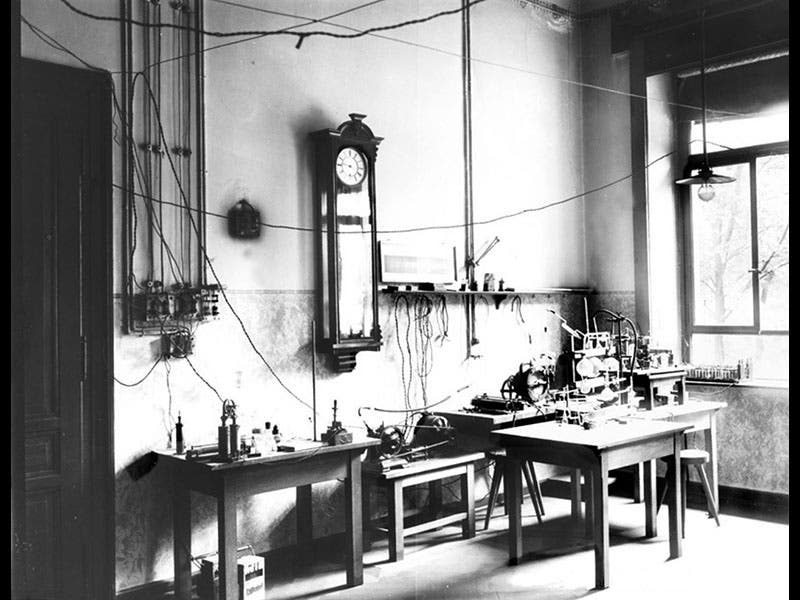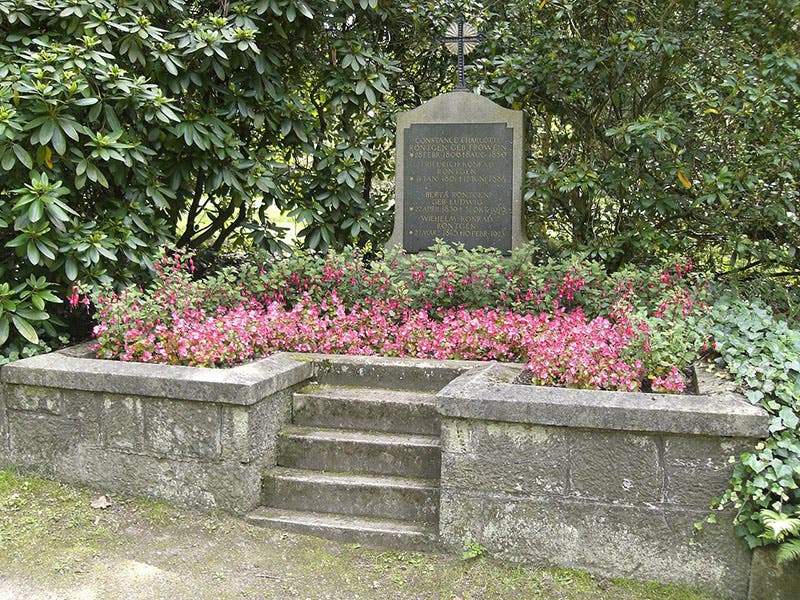Scientist of the Day - Wilhelm Röntgen
Wilhelm Röntgen, a German physicist, died Feb. 10, 1923, at age 77. Röntgen taught at German universities at Strassburg (recently annexed) and Giessen before settling into the desirable chair of physics at Würzburg. It was there, in the fall of 1895, that Röntgen made the discovery that ensured his fame. On Nov. 8, 1895, Röntgen was investigating spurious radiation produced by various cathode ray tubes when subjected to high voltages. He noticed that even when the tubes were covered by black cardboard, radiation from the tubes was able to make a phosphorescent screen across the room glow in the dark. Some kind of radiation was passing right through the supposedly opaque cardboard. He called the mysterious radiation "X-rays,” and he investigated their properties extensively for the next six weeks. On Dec. 22, 1895, he took a photograph of his wife's hand that showed every bone within, as well as a now seemingly oversized wedding ring (first image above), and the import of his discovery set in.
He published his first paper on the phenomenon, "Über eine neue Art von Strahlen" (“On a new kind of radiation”) before the year was out, and within a few weeks, X-rays were a world-wide phenomenon. Everyone except Röntgen called them Röntgen rays. His discovery effectively launched what is sometimes called the Second Scientific Revolution, as, in short order, physicists in France and England discovered: radioactivity (1896), the electron (1897), radium (1898), alpha and beta radiation (1899), and gamma rays (1900). For his discovery, Röntgen received the very first Nobel Prize in Physics in 1901. We have all three of his seminal papers in our serials collection, and we displayed one, showing a print of an X-ray photograph of yet another hand-with-ring, in our 2010 exhibition, The Atomic Age (third image).
The other images show a portrait of Röntgen, his lab in Würzburg where X-rays were discovered, and the Röntgen family grave in Giessen.
Dr. William B. Ashworth, Jr., Consultant for the History of Science, Linda Hall Library and Associate Professor, Department of History, University of Missouri-Kansas City. Comments or corrections are welcome; please direct to ashworthw@umkc.edu.

